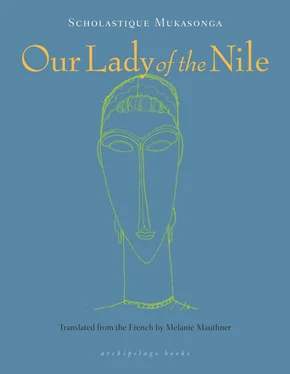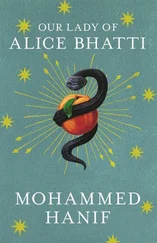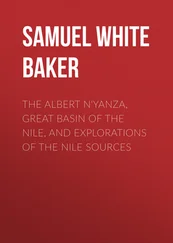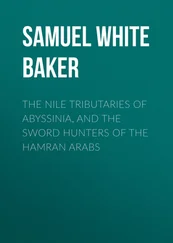Upon returning to the lycée, Veronica opens up her geography book. It’s quite tricky to follow the course of the Nile, she has no name to start off with and then there are too many. She seems to have multiple sources, she hides in a lake, resurfaces, turns white, then gets lost in a swamp, while her Blue brother appears somewhere else. She’s easier to keep track of near the end, where she flows in a straight line, with desert on either side, lapping at the foot of the pyramids — the big ones — before spreading chaotically into the delta, and finally gushing into the sea, which is far bigger than the lake, so they say.
Veronica realizes that someone is peering over her shoulder, staring at the open page of the textbook with her.
“So, are you looking for the way back to where your people came from, Veronica? Don’t worry, I’ll pray to Our Lady of the Nile that the crocodiles carry you there on their backs, or rather in their bellies.”
Veronica would be forever haunted by Gloriosa’s laugh, especially in her nightmares.
Our Lady of the Nile: how proudly the school stands. The track leading to the lycée from the capital, winds its interminable way through a labyrinth of hills and valleys and ends, quite unexpectedly, in a twisting climb up the Ikibira Mountains — which geography textbooks call the Congo-Nile range, for want of any other name. The lycée’s imposing main building comes into view, and it almost feels as if the peaks have eased themselves aside to make room for the school, there on the edge of the opposite slope, at the bottom of which you glimpse the sparkling lake. The lycée sits on the mountaintop, glinting at the schoolgirls, a palace that shines with their impossible dreams.
The construction of the lycée was a spectacle that Nyaminombe won’t forget in a long time. Not wishing to miss a thing, the normally idle men abandoned their jugs of beer in the bar, the women left their fields of millet and peas earlier than usual, and at the sound of the beating drum that announced the end of class, the mission-school children ran out and scrambled through the small crowd watching and commenting on the work in progress, to be in the front row. The more intrepid pupils had already slipped out of school to line the track, watching for the dust cloud that would announce the arrival of the trucks. As soon as the convoy reached them, they ran behind the vehicles and tried to grab hold. Some succeeded, others fell off and barely missed getting run over by the next truck. The drivers hollered in vain, trying to shoo away the swarm of daredevil kids. Some stopped their vehicles and stepped down, and the kids would scamper off, with the driver pretending to chase them, but as soon as the truck started off again, the game began anew. The women in the fields lifted their hoes to the heavens in a gesture of powerlessness and desperation.
Everyone was amazed to see no smoking pyramids of baking bricks, no procession of farmers carrying bricks on their heads, as they did when the umupadri asked the faithful to build a new church annex or when the mayor summoned the local people on a Saturday to help with community projects, such as enlarging the clinic or his house. No, this was a real white man’s construction site in Nyaminombe, with real white laborers, fearsome iron-jawed machines that ripped and gouged the earth, trucks carrying machines that made an infernal racket and spewed cement, foremen barking orders in Swahili at the masons, and even white overseers who did nothing but look at large sheets of paper they unrolled like bolts of cloth from the Pakistani shop, and who went crazy with rage when they called the black foremen over, as if they were breathing fire.
Of all the lore surrounding the construction site, the most memorable is the story of Gakere. The Gakere Affair. People still recount it today, and it always raises a laugh. The end of each month was payday in Nyaminombe — the thirtieth, a perilous day. Perilous for bookkeepers, subjected to the workers’ often violent complaints. Perilous for the day laborers who knew that the thirtieth was the only date their wives remembered: they’d not be in the fields but waiting in the doorway of the hut to take the banknotes their husband handed them; they’d check the amount, tie a piece of banana fiber around the paltry wad, slip it into a little jug, and hide it under the straw by the bedside table. The thirtieth was marked by all kinds of quarrels and violence.
Tables for the bookkeepers were set up beneath awnings, or under shelters made from straw and bamboo. Gakere was a bookkeeper, and it was he who paid the day laborers. He was a former deputy chief of Nyaminombe, who had been purged like so many others by the colonial authorities and replaced by another deputy chief (soon to be mayor), who was a Hutu. Gakere was hired because he knew everyone, all the local hired hands who didn’t speak Swahili. Bookkeepers from the capital were hired to pay the others, the real builders, who’d come from elsewhere and did speak Swahili. Everyone queued at the bookkeepers’ tables — come rain (usually) or shine — and there was always shouting and shoving, complaints, arguments, and recriminations. The heavies who guarded the construction site kept order, whacking the recalcitrant workers into submission with their sticks — the mayor and his two gendarmes didn’t want to get involved, neither did the whites. So Gakere settled beneath his shelter with his cash box under his arm. He sat down, placed the little box on the table, and opened it. The cash box was full of banknotes. Slowly, he unfolded the sheet of paper, a list of names of all the workers he had to pay, workers who’d waited hours. He began the roll call: Bizimana, Habineza … The laborer approached the table. Gakere pushed the few notes and coins owed toward him, the laborer pressed an ink-blackened finger next to his name, and Gakere muttered a few words to him as he marked the list with a cross. So for an entire day, Gakere was again the chief he had once been.
Then, one payday he didn’t show up: no Gakere, no cash box. It was soon known that he’d run off with the little box stuffed full of notes. “He’s gone to Burundi,” people said. “Crafty Gakere, he’s fled with the Bazungu’s money, but how will we get paid now?” Gakere was both admired and condemned: “He shouldn’t have taken the money intended for the people of Nyaminombe, he could have figured out how to take the money from somewhere else.” But, in the end, the day laborers did get paid, people stopped begrudging Gakere, and no more was heard of him for two months. He’d abandoned his wife and his daughters, who were questioned by the mayor and closely watched by the gendarmes. But Gakere hadn’t told them of his dishonest plans: rumor had it that he planned to use the money to take a new wife in Burundi, a younger, prettier one. And then he returned to Nyaminombe, hands tied behind his back, two soldiers escorting him. He had never reached Burundi. He’d been afraid to cross Nyungwe Forest, because of the leopards, the big monkeys, and even the elephants who hadn’t roamed the forest for years. He’d traveled the entire country with that little cash box under his arm. He’d tried to cross the large swamps in Bugesera, and lost his way. Burundi wasn’t far but he’d wandered in circles through the stands of papyrus sedge, without ever reaching the border, which, it’s true, wasn’t marked. They eventually found him, on the edge of the swamp, thin and exhausted, his legs swollen. The banknotes were nothing but a spongy mass floating in his water-filled cash box. They tied him to a post by the site entrance for a whole day, to serve as an example. The workers filing past didn’t curse or spit at him, just lowered their heads and pretended not to notice. His wife and his two daughters sat at his feet. One of them would get up from time to time, wipe his face and give him a drink. Gakere was convicted but didn’t stay in prison very long. He was never seen in Nyaminombe again. It could be that he reached Burundi at last with his wife and daughters, but without his little box. Some wondered whether the Bazungu had cast a spell on the banknotes, whether those wretched notes had made poor Gakere spin like a top, and that was why he never managed to reach Burundi.
Читать дальше












